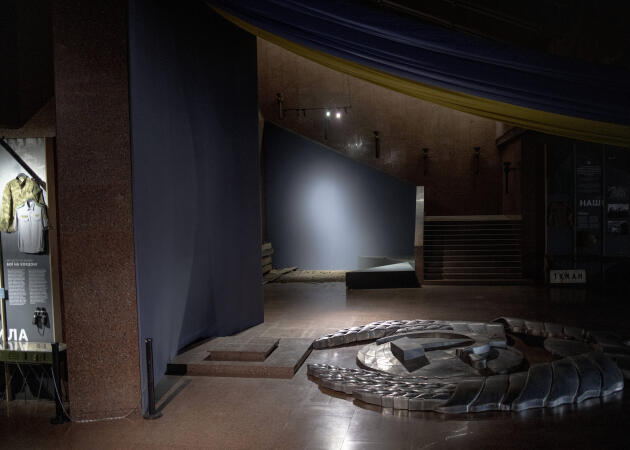Looking back, 58-year-old Yuri Savchuk feels as if his entire life led to this day in August 2023. His history studies, his career as a civil servant in cultural institutions, his appointment to the National Museum of the History of Ukraine during the Second World War in Kyiv, a month before the Russian invasion. All suddenly seemed to make sense to this gentle, shy man: the gigantic metal statue, and the adjoining museum where he serves as director, have just been "de-communized" with great ceremony.
Emblematic of the Ukrainian capital, the monument, built in the days of the USSR, depicts a woman holding a sword and shield, which, until recently, was adorned with the Soviet hammer and sickle. On August 7, these were replaced by a trident, Ukraine's coat of arms, just before Independence Day on August 24. The woman herself, named Motherland at her conception, was renamed Mother Ukraine. "This is the real moment of the dismantling of the Soviet empire, the one that generations of Ukrainians dreamed of," said the director. However, this highly symbolic gesture had been repeatedly postponed for over 30 years.
Some statues have a life of their own, following their own rhythm. In her own way, Mother Ukraine today tells a part of the country's story. After dodging giant statues of Lenin and Stalin in the 1930s, Kyiv finally saw this woman erected on one of its hills under the reign of Leonid Brezhnev, then general secretary of the Communist Party of the Soviet Union, in 1981. The statue was built to commemorate the victory of the Second World War, and its dimensions were intended to embody its power: 62 meters high (102 with the base), enough to dominate Kyiv and crush its rival on the other side of the Iron Curtain, the Statue of Liberty in New York, 46 meters high (93 with the base).

Its construction was a tour de force, with blocks of stainless steel welded together, two platforms and two interior elevators. In the pedestal – which now houses the museum – a "special block" was fitted out to receive Brezhnev on inauguration day, complete with a kitchen, bathroom and a meeting room. One of the rooms, known as the "Holy of Holies," was reserved for a closed circle of individuals, with nine armchairs, not one more, and a direct telephone line to the general secretary of the Communist Party of Ukraine.
'De-communization'
With the break-up of the USSR, the demolition of Soviet statues began in the country, as in the whole of the former empire. In Ukraine, destruction came in waves, accompanying each of the country's political turning points like a procession: first after independence in 1991, then during the "Orange Revolution" in 2004, with huge protests against Moscow's hold on the Ukrainian presidential election. But the real dismantling came in the wake of the Maidan Revolution in 2014, when bloody protests ousted pro-Russian president Viktor Yanukovych from power. In March 2015 alone, 320 Lenins fell from their pedestals across the country. Meanwhile, in Kyiv, parliament passed the first volley of "de-communization" laws. "It's a sacrilege, a perverse vision of good and evil," retorted the Foreign Ministry in Moscow.
You have 59.59% of this article left to read. The rest is for subscribers only.
